If the rising popularity of film degrees is any indication, audiences today are more film literate than ever before. However, just like students of literature and fine art need to become knowledgable of classic masterpieces in order to further their understanding and properly critique new works, so too must film students become enlightened by the most important movies in cinematic history, despite the fact that they might not be all that interested in movies that came out half a century ago. So if you’re looking to do well in film school or just want to prove to your friends that you’re a bigger cinephile than them, you best be sure to watch each and every movie on this list.
12. Seven Samurai (1954)
Seven Samurai is the legendary, massively influential picture produced by renowned director Akira Kurosawa. The story is about a group of villagers who, upon overhearing the atrocious plan of a group of bandits, decide to protect their crops and land by hiring a group of mercenary samurai. However, due to extreme poverty and food shortages, the villagers are limited in who they can hire. It’s only through sheer luck (or perhaps destiny) they successfully find seven samurai to help their cause.
Seven Samurai is an epic tale of class and cultural conflict that’s flush with pulse-pounding action sequences and heart-wrenching twists.
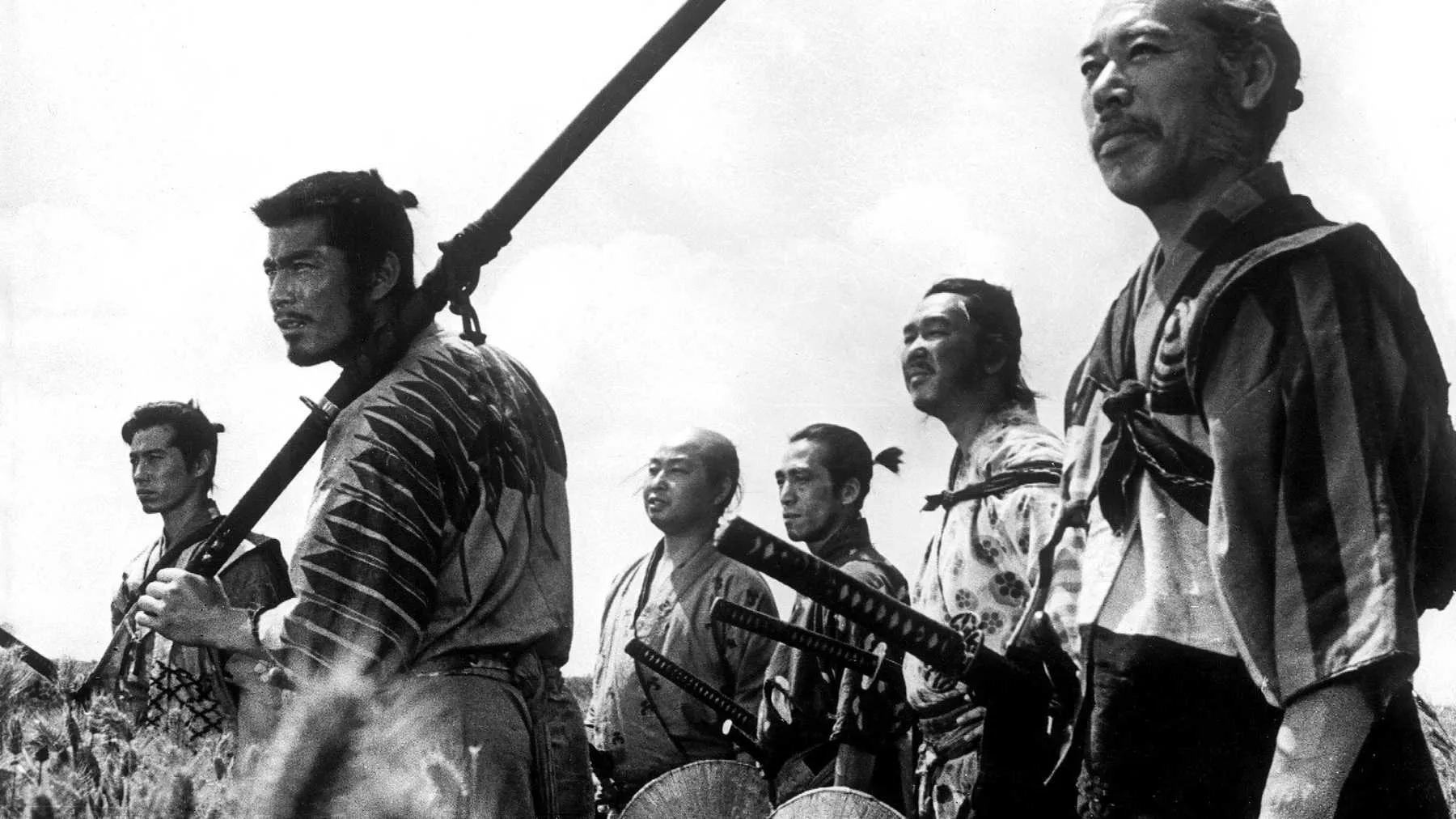 Source: Screenshot via Toho
Source: Screenshot via Toho11. The Godfather (1972)
Representing the pinnacle of mafia movies, The Godfather became so hugely influential that scenes from the film have been referenced and parodied innumerable times in other movies and TV shows. Francis Ford Coppola adapted the movie from the novel of the same name, which tells the story of a family set in the violent world of the Italian mob in America. His sympathetic portrayal of the central characters captivated audiences which, up until then, rarely got so much as a glimpse into the inner workings of the criminal underworld.
 Source: Screenshot via Paramount Pictures
Source: Screenshot via Paramount Pictures10. Citizen Kane (1941)
It’s no coincidence that Citizen Kane is found at the top of nearly every “Greatest Movies of All Time” list. Orson Welles directorial debut was the first movie to really showcase what could be achieved with the cinematic techniques of the time. Overlapping dialogue, flashbacks, deep-focus photography, all of these tricks had been first introduced in older movies, but never before had they been used as effectively or assembled as flawlessly as they were in Citizen Kane.
Surprisingly, when the movie was first released it wasn’t much of a commercial success and quickly disappeared from the box office. It wasn’t until years later when a lot of French critics began recognizing its excellence the film emerged as the classic we know it to be today.
 Source: Screenshot via RKO Radio Pictures
Source: Screenshot via RKO Radio Pictures9. Lawrence of Arabia (1962)
Much like Citizen Kane, there are plenty of critics and cinephiles out there who place Lawrence of Arabia near the top of their “Greatest Movies of All Time” list. And also like Citizen Kane, Lawrence of Arabia seems to have this ineffable aura of perfection surrounding it that makes it a topic of discussion in many film classes. It deals with a multitude of themes ranging from philosophy and religion to World War I and foreign policy. T.E. Lawrence is considered by many historians to be a somewhat obscure figure. Rather than doing the typical Hollywood thing, David Lean and the other filmmakers decided to leave audiences guessing rather than provide any sort of explanation. Producer Sam Spiegel once explained that the real purpose behind the movie wasn’t to solve the mystery of who Lawrence of Arabia was, but rather, to perpetuate it.
If you still require further motivation to see the movie, it might help you to know that Steven Spielberg considers this to be his favorite film of all time, and the one which convinced him to become a filmmaker.
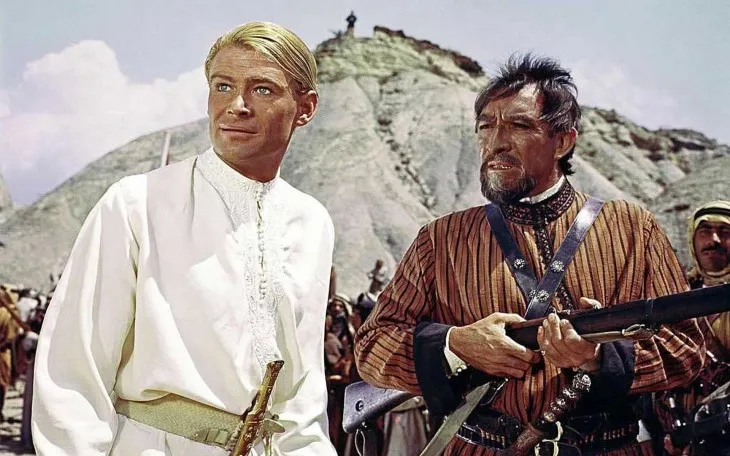 Source: Screenshot via Columbia Pictures
Source: Screenshot via Columbia Pictures8. Vertigo (1958)
Alfred Hitchcock was known as the Master of Suspense and he left behind a huge cinematic legacy that has had an immeasurable impact on film and pop culture. Although North by Northwest and Psycho are probably his best-known pictures, critics often cite Vertigo as the director’s greatest work.
Despite being a commercial and critical failure when it was initially released, Vertigo is usually included in a lot of film school curriculums because it features many of Hitchcock’s signature tropes, including staircases, passionless blondes, and the perfect murder. While it’s true that some of his other films like Birds and Dial M for Murder might be more enjoyable for casual movie watchers, Vertigo begs further analysis and multiple viewings more than any other Hitchcock movie.
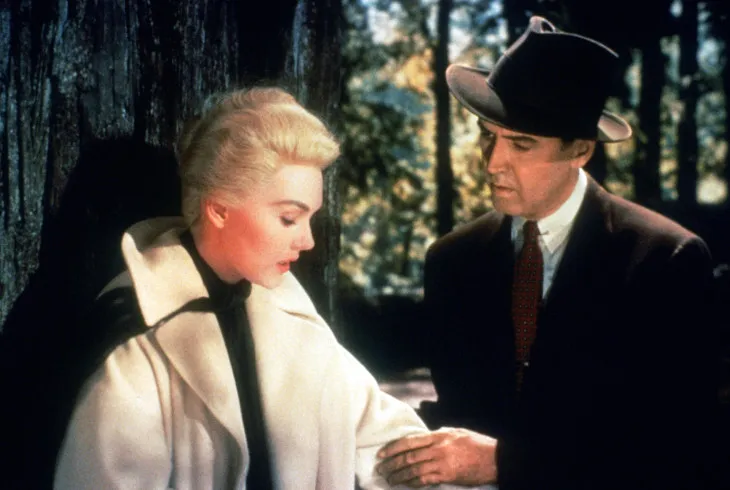 Source: Screenshot via Paramount Pictures
Source: Screenshot via Paramount Pictures7. This Is Spinal Tap (1984)
A mockumentary following a fictional British rock band, almost every scene in This Is Spinal Tap is positively hilarious as the outrageous musicians are apparently unaware of how ridiculous they carry on through every preposterous situation. Even people who have never seen the movie can probably reference the scene where Tufnell whole-heartedly endorses an amplifier that goes up to 11 rather than 10, or that part where the band plays a gig that involves a bunch of midgets dancing around a miniature replica of Stonehenge.
Although This Is Spinal Tap initially debuted to lukewarm reviews, once audiences picked up on the brilliant satire, it quickly became a cult favorite.
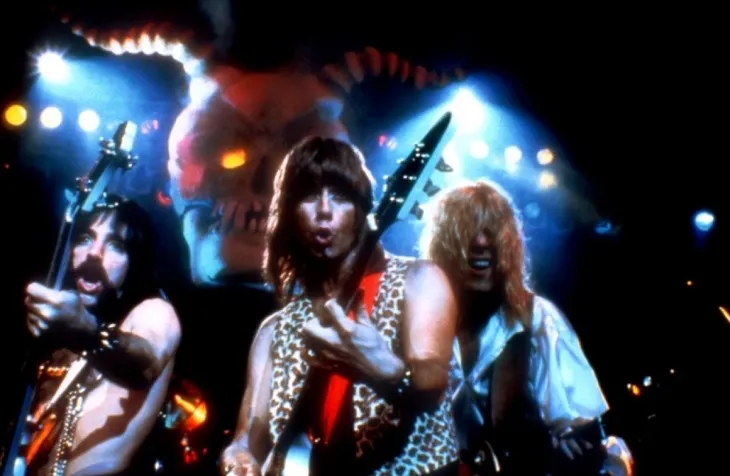 Source: Screenshot via Embassy Pictures
Source: Screenshot via Embassy Pictures6. Memento (2000)
Through the outstanding quality of his work, Christopher Nolan has earned his place as one of the most successful directors working today. And while his blockbusters pictures like Interstellar, The Dark Knight and Inception have netted him a lot of recognition lately, it’s one of his earlier movies that really established him as a master storyteller.
Memento is about a man named Leonard Shelby who suffers from a condition known as anterograde amnesia, which prevents him from being able to remember any new information. To express the disorder cinematically, Nolan tells the story through two different sequences and juxtaposes them. One of the sequences is in black and white and plays chronologically, while the other sequence is in color and is shown in reverse order. The film’s nonlinear narrative is expertly constructed and seems to push the boundaries of what can be achieved in storytelling. More so than any other movie in recent memory, Memento proved that modern cinema can still find novel ways for us to enjoy movies without relying on big-budget special effects.
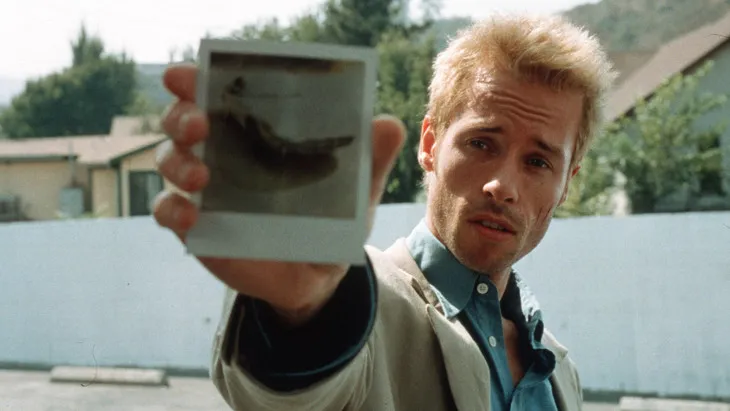 Source: Screenshot via Newmarket
Source: Screenshot via Newmarket5. Pulp Fiction (1994)
Quentin Tarantino’s movies aren’t for everyone, but even if you’re among the people who consider Pulp Fiction to be overrated, the movie is undeniably well-crafted. Despite disregarding virtually every rule in the screenwriters’ handbook, it splendidly weaves together several stories told in non-chronological order and somehow manages to have them all link up perfectly at the end. When writing for the Chicago Sun-Times, Roger Ebert described the movie as “so well-written in a scruffy, fanzine way that you want to rub noses in it—the noses of those zombie writers who take ‘screenwriting’ classes that teach them the formulas for ‘hit films.'”
Pulp Fiction also became such a treasure trove of iconic lines, scenes, and musical selections, that its cult status was all but assured from the day it premiered.
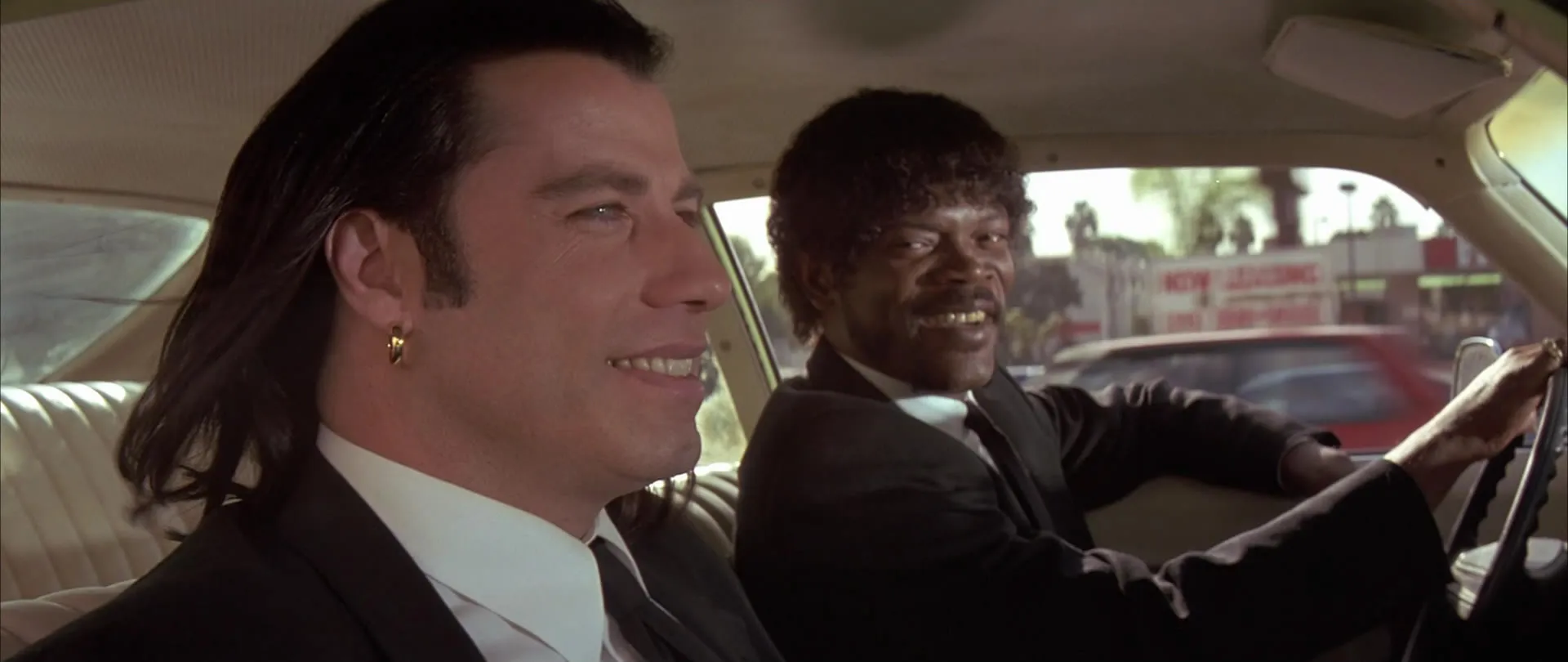 Source: Screenshot via Miramax Films
Source: Screenshot via Miramax Films4. Alien (1979)
Everyone always hails Star Wars as the breakout science fiction movie of the ’70s because it introduced so many revolutionary special effects techniques. But if you really want to learn a thing or two about creating a cinematic masterpiece set in space, you should be focusing more on Ridley Scott’s 1979 science fiction horror, Alien.
Rather than going with hyperdrives and bright fantasy worlds, Scott and screenwriter Dan O’Bannon created a gritty dystopian view of future space travel that seemed much more grounded in reality. And while most people wouldn’t expect a horror movie to be laden with so much intricate subtext and symbolism, Alien is positively bursting with themes that beg a closer examination, from sexually-charged Freudian imagery to the explorations of feminism and gender stereotypes. Most films that tackle such topics aren’t nearly as entertaining as Alien. The exceptional way in which Scott builds tension throughout the whole movie is highlighted by the alien creature itself, which, thanks to some amazing design work by H.R. Giger, has now become one of the most iconic and terrifying creations in all of cinema.
Sigourney Weaver’s stellar portrayal of Ellen Ripley also deserves the highest praise for showing that women don’t always have to be relegated to playing shrieking murder victims in horror movies.
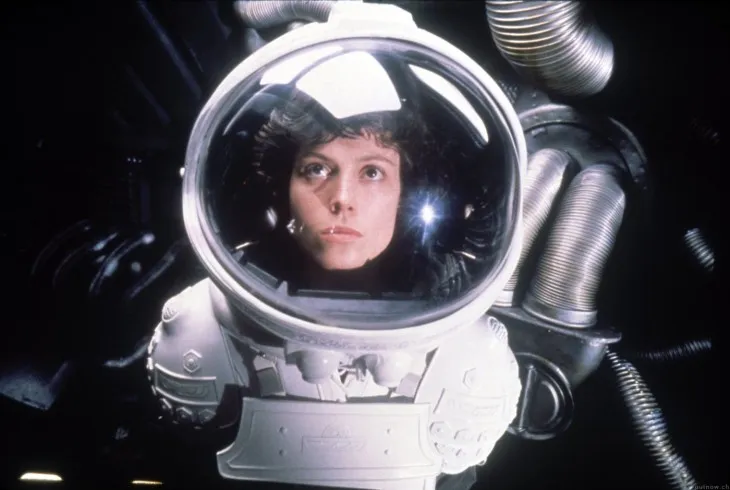 Source: Screenshot via 20th Century Fox
Source: Screenshot via 20th Century Fox3. Spirited Away (2001)
Adult audiences will often argue that animation is purely for children, but true film buffs know that the artistic excellence that goes into making a top-level animated feature can often surpass that of a live-action film. Nowhere is the point exemplified better than in the works of Hayao Miyazaki and his movie company Studio Ghibli.
Over the years Studio Ghibli has created a number of movies that are wonderfully told and beautiful to behold, but the one that finally broke through to mainstream audiences in the West was Spirited Away. The movie tells the enchanting story of a young girl who finds work in a magical bathhouse in order to break a spell that has transformed her parents into gluttonous pigs. Everything you see in the movie is an original concept that was intricately hand-drawn and brought to life by the talented artists at Ghibli. Miyazaki is such master of fine detail that you could watch this movie a hundred times and still be picking out subtle nuances and features that you never noticed before.
Spirited Away became the first film of any kind to break the $200 million mark before being released in the U.S., demonstrating the enormous potential that animation medium can bring to the world of storytelling. In 2003, it won the Academy Award for Best Animated Feature.
 Source: Screenshot via Toho
Source: Screenshot via Toho2. Apocalypse Now (1979)
Francis Ford Coppola’s Vietnam War movie is widely regarded as one of the best films of all time. That appreciation is all the more deserved when you take into account the now-legendary difficulties that hampered the film’s production: Marlon Brando was overweight and irritable, heavy storms destroyed sets, and Martin Sheen suffered a heart attack.
In 2009, Apocalypse Now topped a poll marking 30 years of the London Film Critics’ Circle Awards. The critics did not think there had been a better film in the past 30 years and placed it ahead of Steven Spielberg’s Holocaust epic Schindler’s List. Chairman of the Film Critics’ Circle Jason Solomons said, ”Coppola’s towering film is a worthy winner and clearly its anti-war message, monumental performances, and dazzling film-making technique have stood the test of time, making it as relevant to critics today as it was when it won best film at our first awards ceremony 30 years ago.”
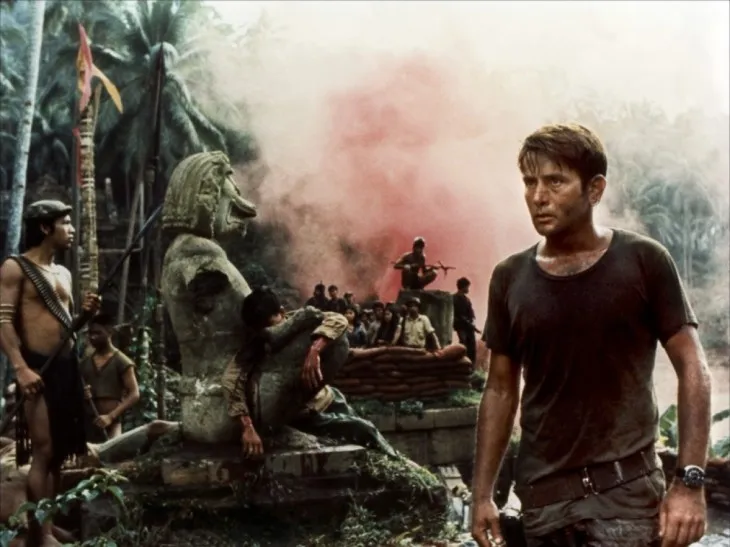 Source: Screenshot via United Artists
Source: Screenshot via United Artists1. 2001: A Space Odyssey (1968)
Nearly 50 years after its release, 2001: A Space Odyssey still remains the most perfect science fiction movie specimen. Using lots of special effects that still hold up visually today, Kubrick masterfully adapted the popular Arthur C. Clarke novel into a work of sublime cinematic poetry. With a lengthy run time of 161 minutes, 2001 barely has 20 minutes of dialogue but still manages to postulate huge philosophical questions about the history and future of mankind. Some of the main themes of the film deal with the ideas of human evolution and purpose, examining some of the prominent technological leaps mankind has made and what implications those advances could have on our future. The dramatic match cut in the film’s opening when a bone tossed into the air is juxtaposed with the image of a satellite is a powerful image that captures the entirety of human evolution in a matter of seconds. And throughout the movie, hundreds of similarly dynamic shots can be found that are just as thematically interesting and visually impressive.
Stanley Kubrick constantly challenged audiences to search for meaning and question human nature in this film. Consequently, 2001: A Space Odyssey is one of the purest examples of cinema as an art form that you’ll ever find.
 Source: Screenshot via Metro-Goldwyn-Mayer
Source: Screenshot via Metro-Goldwyn-Mayer